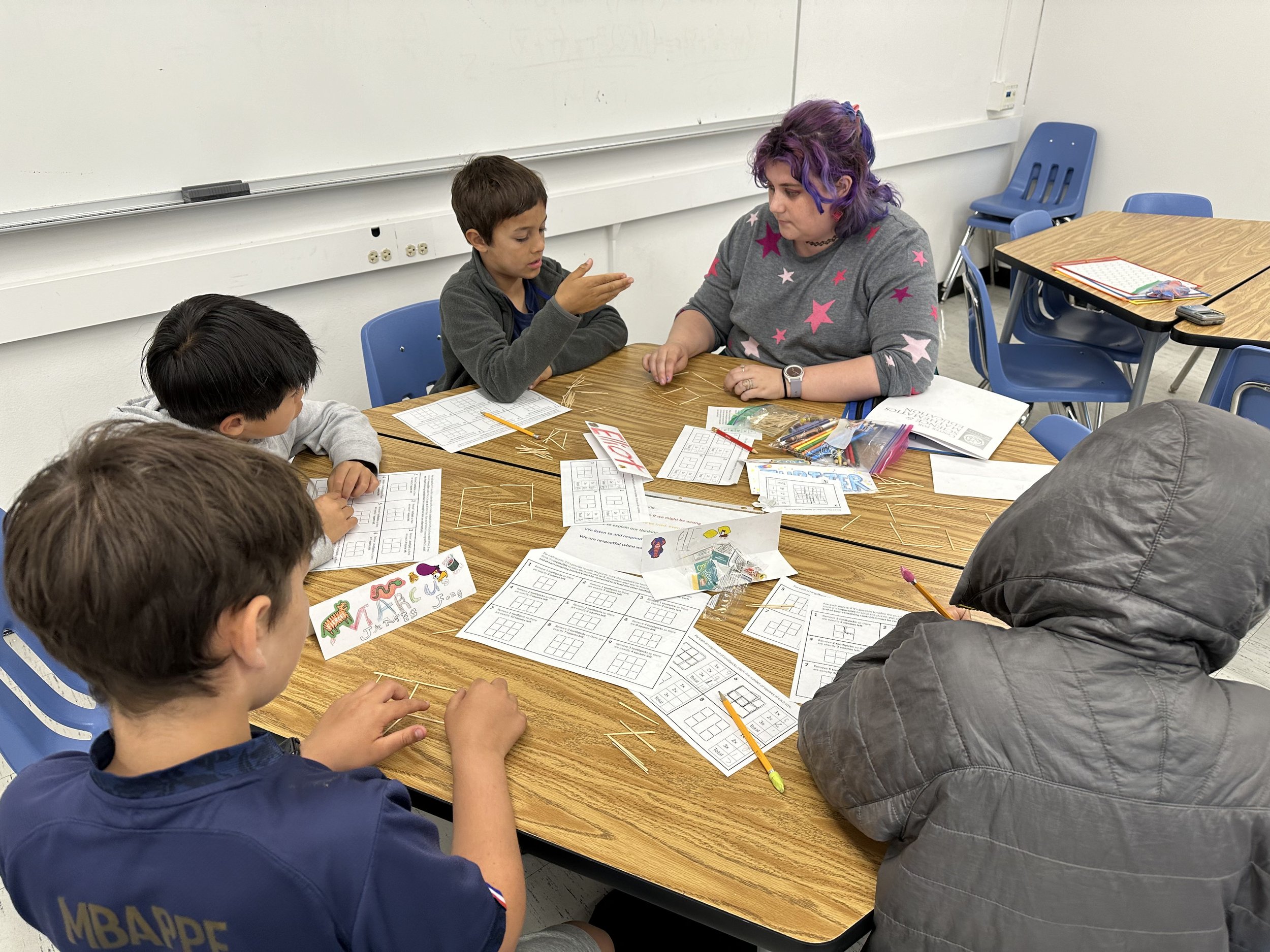Toothpick Tricks
How it works
Imagine you have a set of toothpicks arranged in a 2 x 2 grid as shown above. How many squares are there in this arrangement?
At first glance it might look like there are only 4, but don't forget the big square around the outside!
Can you remove exactly 2 toothpicks from this arrangement to create an arrangement with exactly 2 squares? You're not allowed to have any "loose ends" (ends of toothpicks that aren't touching any other toothpick), but the squares can be any size.
In this activity, students first practice counting the numbers of squares of different sizes in various arrangements of toothpicks. Then they explore puzzles like the one above, where they start with a specific arrangement of toothpicks and have to remove a specific number of toothpicks to create an arrangement with a specific number of squares. They also explore puzzles where you move toothpicks instead of removing them, and possibly also puzzles involving moving chips instead of toothpicks.
Why we like this activity
It’s fun! Students enjoy trying to solve the puzzles.
It helps students to develop spatial reasoning.
It helps students to develop numerical reasoning.
It helps students to develop algorithmic reasoning.
It requires students to engage in mathematical habits of mind:
- Finding and using strategies to solve the puzzles
- Using logic and understanding and explaining when trying to determine which puzzles are impossible
It has a low floor and a high ceiling: Students can start solving puzzles by trial and error, but more challenging puzzles require more careful strategizing!







